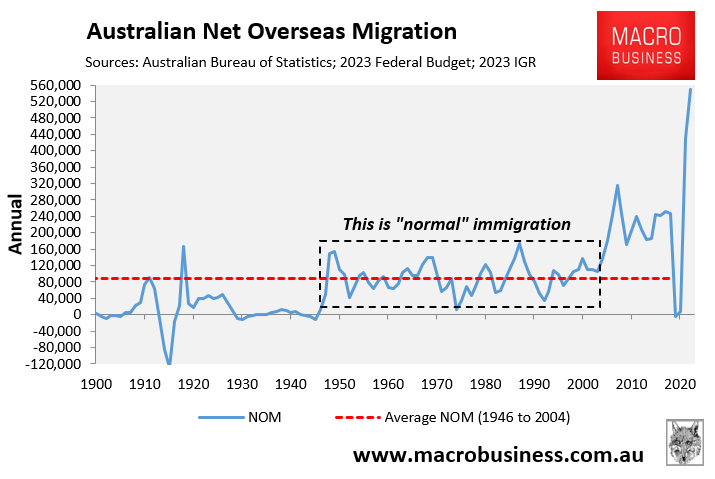The Albanese government has set a five-year goal of building 1.2 million homes, commencing on July 1 of this year.
To reach this goal, Australia needs to build 60,000 homes per quarter, or 240,000 dwellings every year for five years in a row.
The following chart compares Labor’s housing target with Australia’s historical dwelling completions:
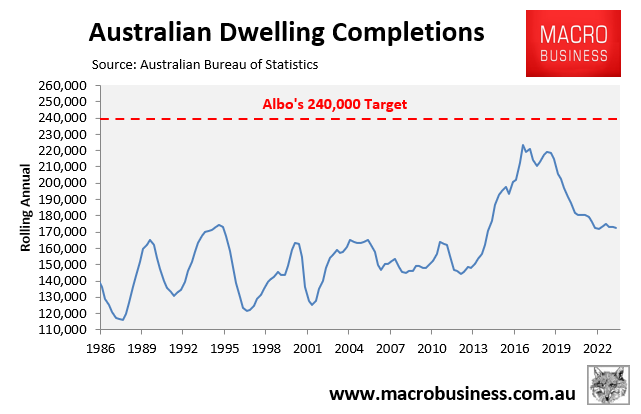
As you can see, Australia’s record annual dwelling completions were 223,000 in the year to March 2017, which was 17,000 below Labor’s objective.
According to the most recent Australian Bureau of Statistics (ABS) estimates, Australia completed only 173,000 homes in the 2023 calendar year, 67,000 less than Labor’s objective.
Worse, yearly dwelling approvals (163,000) and home starts (164,000) are falling even further behind the Albanese government’s 240,000 construction objective.
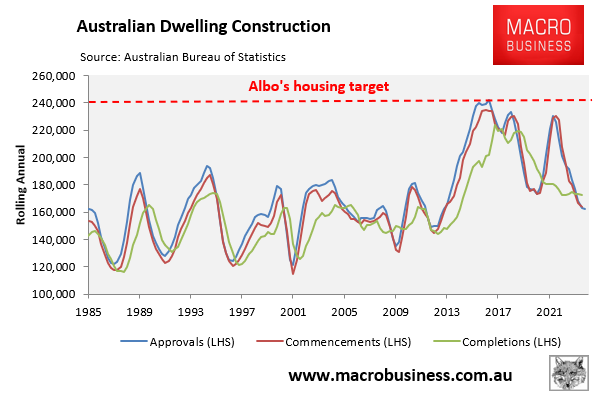
Earlier this week, a AFR survey of 12 property analysts and economists revealed a common concern that rising costs will make home building increasingly uneconomic, resulting in a decade-long housing shortage and rental crisis.
“Of the myriad barriers to housing supply, the spike in construction costs is the most binding constraint and has dissuaded many developers from initiating a more robust supply response over the past year despite rapidly rising rents”, Knight Frank chief economist Ben Burston said.
It is easy to see why analysts are concerned.
CBA published the following chart last month, showing that Australian residential construction costs have soared by between 30% and 40% since the start of the pandemic:
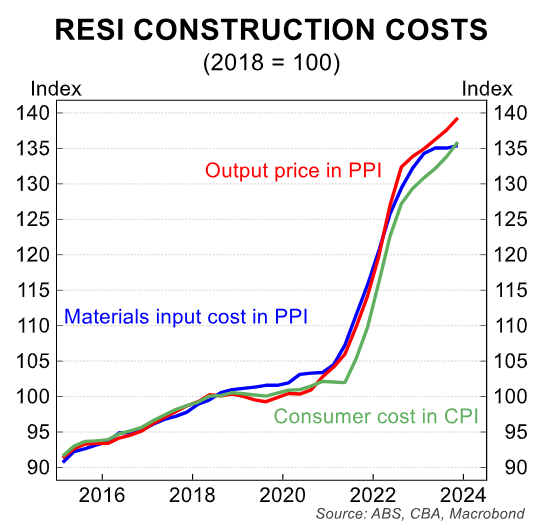
Justin Fabo at Antipodean Macro likewise posted that output prices in home building have risen even faster than the cost of materials, in part reflecting rising labour costs:
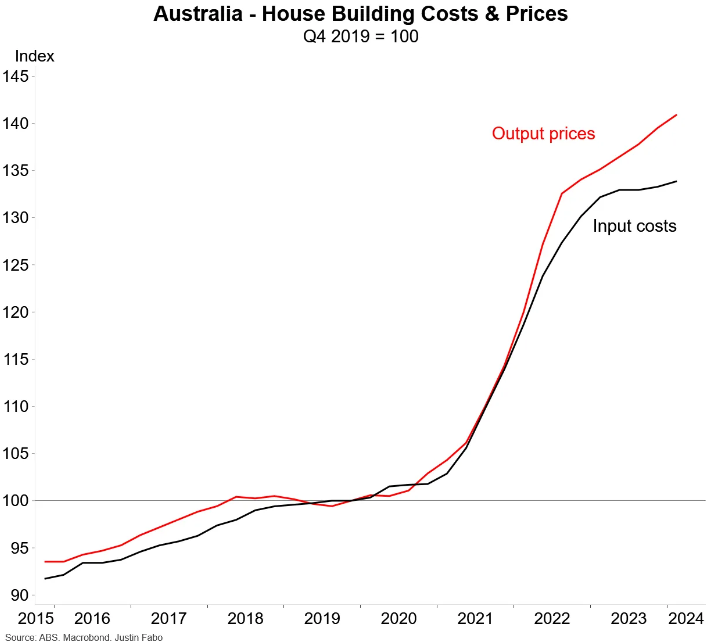
With home builders now competing against state government ‘big build’ infrastructure projects, it is difficult to see how construction costs will ease anytime soon.
Meanwhile, at the same time as dwelling approvals have collapsed to an 11-year low, the average value of residential approvals has hit a record high, reflecting the surge in construction costs:
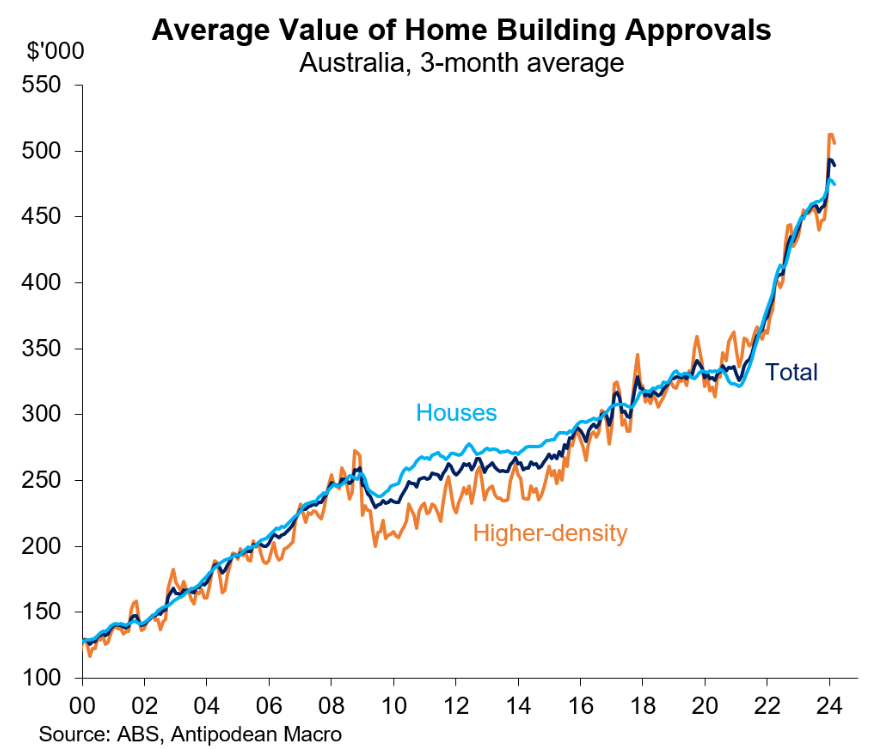
As shown above, the average home approval now costs some $150,000 more than it did at the beginning of the pandemic—an enormous increase.
The next chart from CBA shows that home builders have been passing on soaring costs:
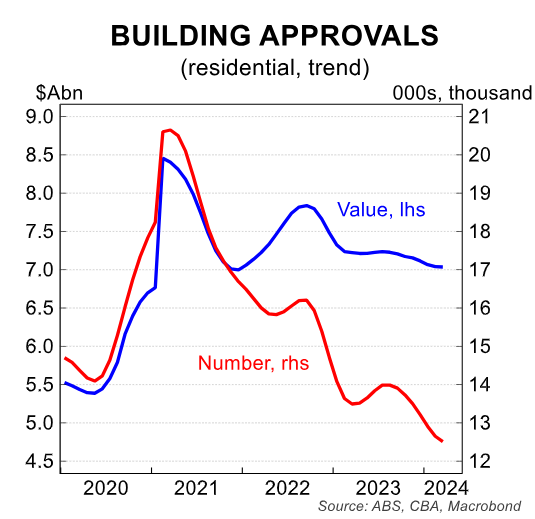
The hyperinflation of costs is why many home builders cannot turn a profit and have collapsed at an alarming rate:
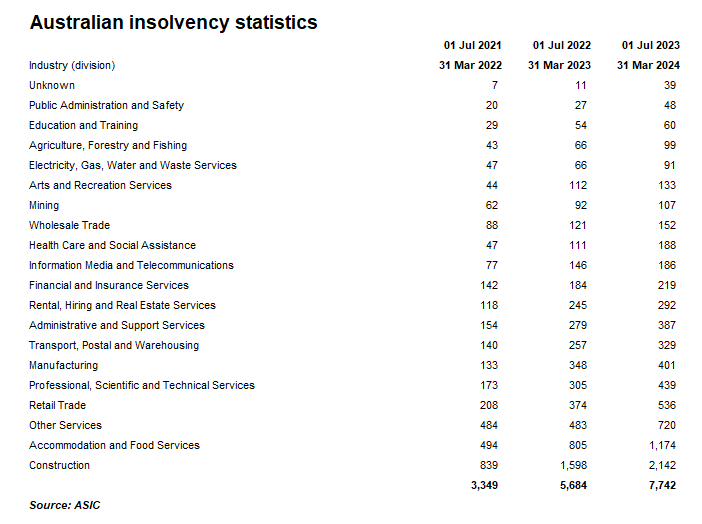
It also explains why demand for new homes has collapsed amid affordability constraints:
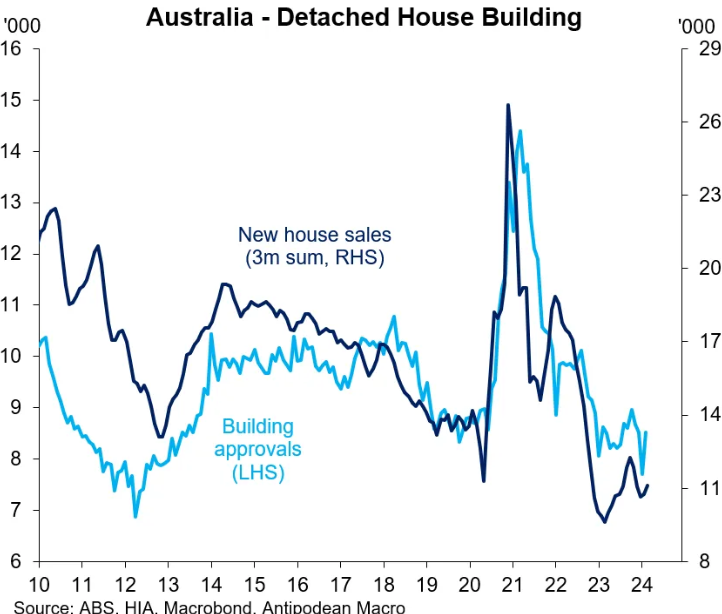
The bottom line is that the Albanese government’s target of 1.2 million homes has zero chance of being achieved.
Actual construction rates are collapsing against soaring population growth:
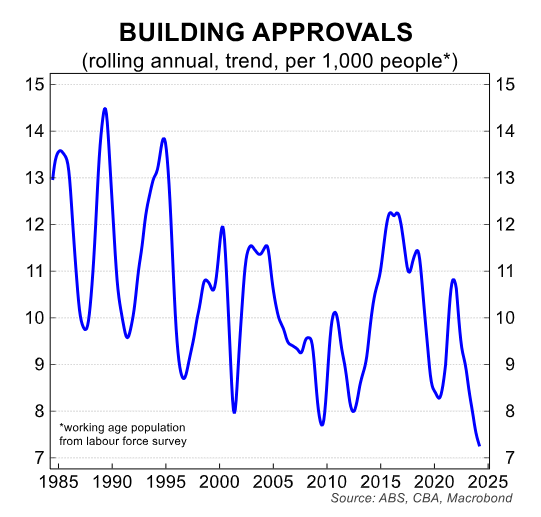
For tenants, it means that rental inflation will run strong so long as the Albanese government maintains the throttle on net overseas migration.
